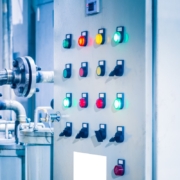Industrial electrical system design
Industrial electrical system design
Industrial electrical system design is a complex and intricate process that requires the expertise of an experienced professional. It is a specialized field that involves the creation of custom electrical systems for industrial applications. It involves the planning, layout, and installation of electrical systems for factories and other large-scale industrial facilities. Designers must consider the safety of workers and maximize efficiency while meeting all applicable codes and standards. With new advancements in technology, such as AI-assisted design tools, designers are able to create more efficient and cost-effective solutions for industrial electrical systems. It also includes the installation of components, making sure they are up to code, and ensuring they are designed for optimal performance. Furthermore, industrial electrical system design requires knowledge in both electrical engineering and mechanical engineering to create efficient systems with minimal energy consumption. This ensures maximum productivity while minimizing energy costs for companies.
Industrial electrical systems are an essential part of any industrial operation. They provide the power and control necessary for production processes to run smoothly and safely. The design of an industrial electrical system should consider the needs of the particular application, including safety, reliability, maintenance, and cost-effectiveness. This article will explore the factors that should be considered when designing an industrial electrical system and how to determine what type of system is best for a given application. Types of Industrial Electrical Systems. There are three main types of industrial electrical systems: personnel-powered, driven, and switch-controlled. Personnel-powered is the most common type of electrical system in industrial operations. The power source generally consists of an electric generator that is connected to a battery bank. The generators can produce sufficient power for the length of time needed at a given site by using commercial power offsite when available and by regenerating its own power using regenerators. Personnel-powered systems are designed to supply voltage from the generator directly to motors, lights, or another load on site and bypass unnecessary circuitry. In medical settings, the hazards associated with generators can be reduced by using small, quiet generators that are out of reach of patients. In some cases, a generator may be used to power a battery pack that provides backup power for critical equipment.

